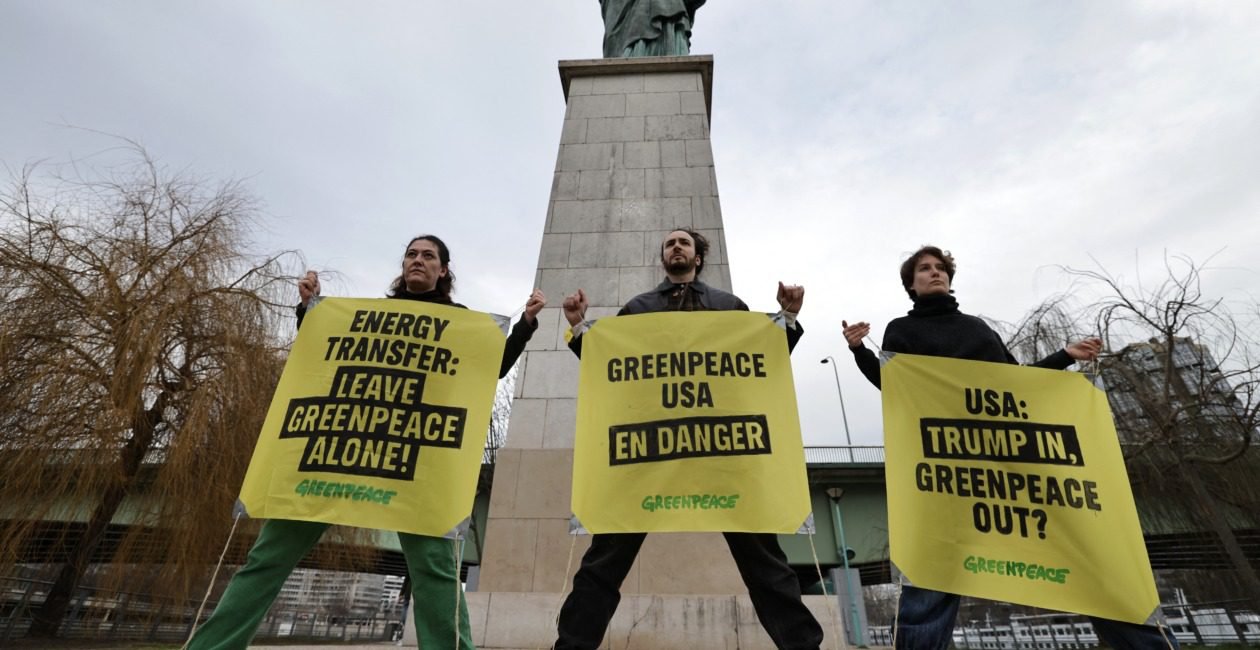Greenpeace, a leading global environmental organization, is currently facing a dire financial crisis that could potentially lead to its bankruptcy. The organization was recently ordered to pay over $660 million in damages to Energy Transfer, the company behind the Dakota Access Pipeline, following a controversial legal battle. This ruling has sent shockwaves through the environmental community, raising questions about the future of Greenpeace USA and the broader implications for environmental activism.
The journey to this critical juncture began with the Dakota Access Pipeline (DAPL) protests in 2016 and 2017. Over 800 people were arrested during a monthslong demonstration led by the Standing Rock Sioux Tribe, opposing the construction of an oil pipeline that traversed from North Dakota to Illinois. Energy Transfer sued Greenpeace USA, Greenpeace International, and Greenpeace Fund, accusing the climate groups of orchestrating the protests by providing resources to the activists. The company claimed that Greenpeace’s actions caused financial loss through damaged property and lost revenues. In March 2025, a North Dakota jury found Greenpeace liable for approximately $660 million in damages. Greenpeace has maintained that its involvement in the protests was minimal and that the lawsuit is an attempt to stifle free speech and peaceful protest.
Another legal setback for Greenpeace came in the form of a pirate-style protest in 2023. Four individuals affiliated with the group boarded and occupied a Shell oil company vessel in the North Sea for two weeks. The activists “unlawfully scaled” the moving vessel while carrying a banner that read “Stop Drilling. Start Paying.” As a result, Greenpeace was ordered to pay 300,000 pounds to the Royal National Lifeboat Institution and was banned from approaching within 500 meters of a Shell platform in the North Sea. This incident underscored the risks associated with direct action protests and the legal consequences that can follow.
In 2020, Greenpeace faced another legal defeat in the Norwegian Supreme Court. The organization, along with Young Friends of the Earth Norway, filed a lawsuit in 2016 against the Norwegian Government to block new oil exploration in the Balian Sea. Known as “People vs. the Arctic,” the case was the first to challenge the country’s constitution on environmental rights. Greenpeace argued that Arctic drilling would violate Section 112 of the Norwegian Constitution, which guarantees the right to a healthy environment. Despite extensive appeals, Greenpeace failed to secure a victory at any level of the Norwegian court system, further highlighting the challenges faced by environmental groups in legal battles.
The recent North Dakota ruling has drawn mixed reactions. A representative for Energy Transfer expressed satisfaction with the outcome, stating that Greenpeace had been held accountable for its actions and that the jury recognized the protests were not “law-abiding” or “peaceful”. The representative emphasized that the victory was shared with the local native tribe and residents of North Dakota who endured daily disruptions caused by the protesters. Conversely, Sushma Raman, a representative for Greenpeace USA, vowed to appeal the decision, asserting that the case is part of a broader corporate effort to silence dissent. Raman argued that the ruling should concern everyone, regardless of political affiliation, as it poses a threat to the First Amendment and the right to peaceful protest.
As Greenpeace navigates this financial and legal quagmire, the environmental community is left to ponder the future of one of its most influential organizations. The cases against Greenpeace underscore the complexities and potential pitfalls of direct action in the fight against climate change. While the group’s intentions may be noble, the legal consequences of their actions have led to a precarious situation that could have far-reaching implications for environmental activism. The outcome of Greenpeace’s appeal and the broader response from the legal and environmental communities will undoubtedly shape the narrative of environmental advocacy in the years to come.




